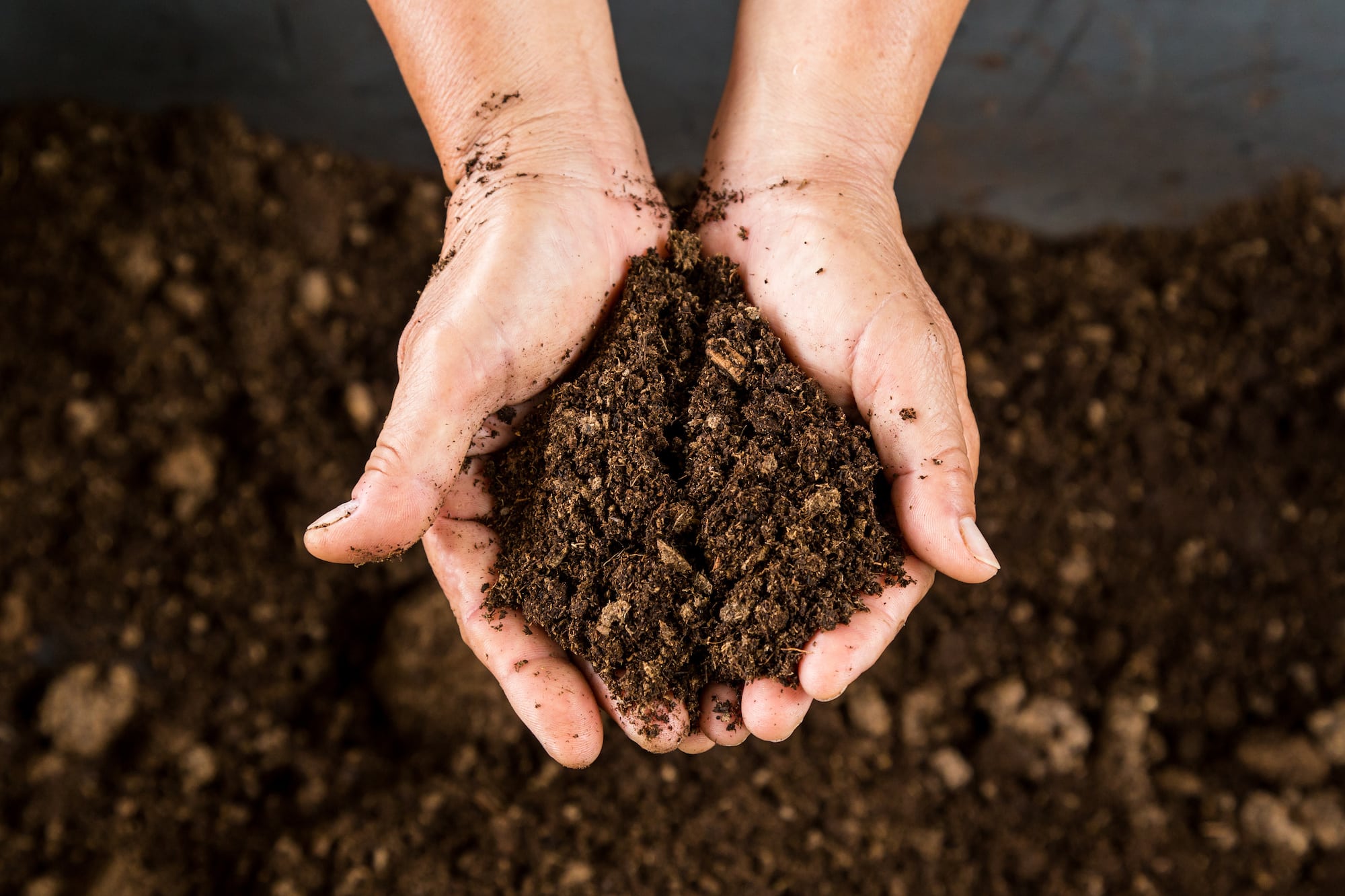Average Cost of Garden Soil, Bulk Soil, and Dirt Delivery
If you’re planning on landscaping your yard, one of the hardest parts of the process can be getting your hands on all the soil or dirt you may need. Although not necessarily the most glamorous part of the landscaping, soil, and dirt are critical in providing your yard with the right structure and your plants with the right nutrients. If you’re converting a lawn into an area for plants or turning an area that was formerly a patio or decking into a flower bed, then you’ll need some topsoil or garden soil to be present – it’s not simply a case of digging down until you get to the soil.

TOPSOIL
Topsoil – which constitutes the top two to eight inches of the earth – is designed to be a perfect weight, permeability, and structure for plants to grow in. Dig down too deep and you’ll be planting in material that won’t support optimal plant growth. On top of that, all of your flowerbeds will be sunken, creating a tripping or falling hazard.
Topsoil has the perfect combination of organic matter and microorganisms. Over time, the topsoil is replenished by leaves and other plants, which shed onto the soil and decompose. However, buying your topsoil will accelerate the process, and ensure that you are giving your flowers the best chance of success. There are four main benefits to organizing a soil delivery to help give your garden the boost it needs to flourish. These are:
Drought Resistance
Topsoil is effectively designed (by nature) to capture as much moisture as possible. For plants, this is perfect, as it allows for the plants to take in water that has fallen as rain. For the homeowner, it means that water is unlikely to run off the surface during times of rain, as well as ensure a healthy-looking yard even during relatively dry periods.
Plant Health
Topsoil allows for nutrients and oxygen to more effectively reach plants. This means that the plants are in better health and grow faster. Plants are therefore encouraged to put down more roots, which in turn improves drainage and minimizes soil erosion.
Drainage
In addition to holding onto enough water to help plants grow, topsoil drains more efficiently than other tips of soil. Counter-intuitively, if you use topsoil as the base layer when you’re planting, you’ll get far better drainage than if you use regular soil.
Nutrients
Most commercial topsoils now come with nutrients mixed in. Over time, you can add further nutrients such as manure or fertilizer, although topsoil can usually replenish itself by capturing organic matter.
If this is the reason why you want to get soil delivered to your home, the potential cost is what may put some people off. This guide will discuss the prices involved so that you have a ballpark sense of what you’ll end up paying. It’ll also show you the optional extras so that you can plan out the best choice for you based on your budget and your needs.
OVERALL COST
Overall, you can expect to pay around $145 for one cubic yard of mulch to be delivered to your home. This varies depending on which state you’re in (sales taxes, for example, vary greatly from state to state). Generally, however, you’ll pay somewhere between $55 and $185.
The varying factors are discussed in the ‘Additional Costs’ section, below. If you’re choosing particularly high-grade mulch, such as hemlock, the costs can be slightly higher, although you’re unlikely to see anything go above $200 or $300.
In order to work out how much soil you actually need, you’ll need to do some math.
Measure the total area you’ll need to cover and multiply this by your desired depth of coverage. For example, an area that is 20 square feet filled to a depth of two feet will require 40 cubic feet (20 multiplied by 2). If in doubt, there are a number of online calculators you can use.
TYPES OF SOIL
The biggest variance comes in terms of what material you are having delivered. The four main types of soil you can have delivered are the following:
Top Soil
Top soil is probably the most common type of soil delivery you will take. It is made up of healthy nutrients, soil, and organic matter. Topsoil is most commonly used – as the name suggests – at the uppermost layer of a flowerbed, as it helps plants, vegetables, and flowers to grow. Topsoil tends to be the darkest soil type in color, and because of its usefulness, is often the most expensive soil type.
Fill Dirt
Fill dirt is topsoil’s less glamorous cousin. It contains none of the nutrients of topsoil and usually consists of a mixture of broken down rocks, sand, and clay. However, because it doesn’t contain any organic matter, it doesn’t break down and shift or settle over time. As the name suggests, fill dirt is used to create a stable surface.
Bulk Soil
Bulk soil refers to soil that is bought as a combination of the other types of soil. It functions as a blend, usually for those who require a mixture of all of the different soil types. Be warned though: in soil science, bulk soil refers to the layer of soil that plant roots don’t reach – be careful not to confuse the terms as you can end up with the wrong type being delivered.
Loam Soil
Loam soil is soil made up of roughly 40% of sand, 40% of silt, and 20% clay. Some plants have preferences for sandy soil, meaning that this is an alternative to topsoil, depending on what you are trying to grow.
Obviously, therefore, the exact type of soil you’ll need to buy is dependent on your own specific needs. However, budget may be a factor in this. Below is an outline of the cost per cubic yard for the different types of soil.
| Soil Type | Cost per Cubic Yard |
|---|---|
| Top Soil | $12 to $55 |
| Fill Dirt | $7 to $12 |
| Bulk Soil | $12 to $55 |
| Loam Soil | $18 to $26 |
ADDITIONAL COSTS
In addition to the basic cost of delivery listed above, there are additional costs involved that you can choose to pay. This depends on your budget, your landscaping project, and your own personal appetite for work. Importantly, in all of this, you should factor in your own personal time as a cost. This will help you work out whether it’s cheaper to pay someone else to do some of the work for you. Most of these ancillary costs are based on paying for additional labor, so it’s best to have a clear idea of the project in mind before you start to get quotes.
SOIL SPREADING
One of the most tempting additional costs you can take on is that of soil spreading. What this means is that the firm delivering the soil will do the work of unloading it from the truck as well as spreading it over your yard. If you are physically incapable of doing the work yourself, this is a necessity; for everyone else, it becomes a trade-off of time and money. The usual cost for this work is between $200 and $400 at a flat rate.
Generally, this can be bundled in with the rest of the service to reduce the overall cost. One further thing to consider is that usually, the delivery will involve more than one person, so if time is of the essence, it’s faster to pay for soil spreading (not to mention that the work will be done by professionals).
HAULING FEE
Generally, if you live within a 10-mile radius of the store where you bought the soil, you will not have to pay a hauling fee. However, beyond that (the actual radius varies from store to store) the company will usually charge a hauling fee. This is generally somewhere around $10 per mile. This can very quickly increase the cost of delivery, particularly if you live in a rural area. A distance of 30 miles from the store can add $300 to the total, potentially doubling the final cost.
TRUCK RENTAL
If you do want to avoid the hauling fee, then you can look into renting a truck yourself. Typically, a full truck capable of taking a load of soil will cost somewhere between $50 and $125 per day (excluding gas) to rent. Again, you’ll need to factor in your time and effort into this, although you can directly price this against any hauling fees.
Ultimately, when it comes to soil delivery, it can be hard to quantify the benefit it brings. Really you need to decide what type of soil you need (topsoil, fill dirt, etc.) and then shop around to get as many quotes as possible.
After that, it’s a case of what extras you want to add on, and how much you value your own time. Either way, your plants, and flowers will surely thank you for the soil, and you’ll be able to create a backyard space you truly enjoy – and that’s well worth the money.







